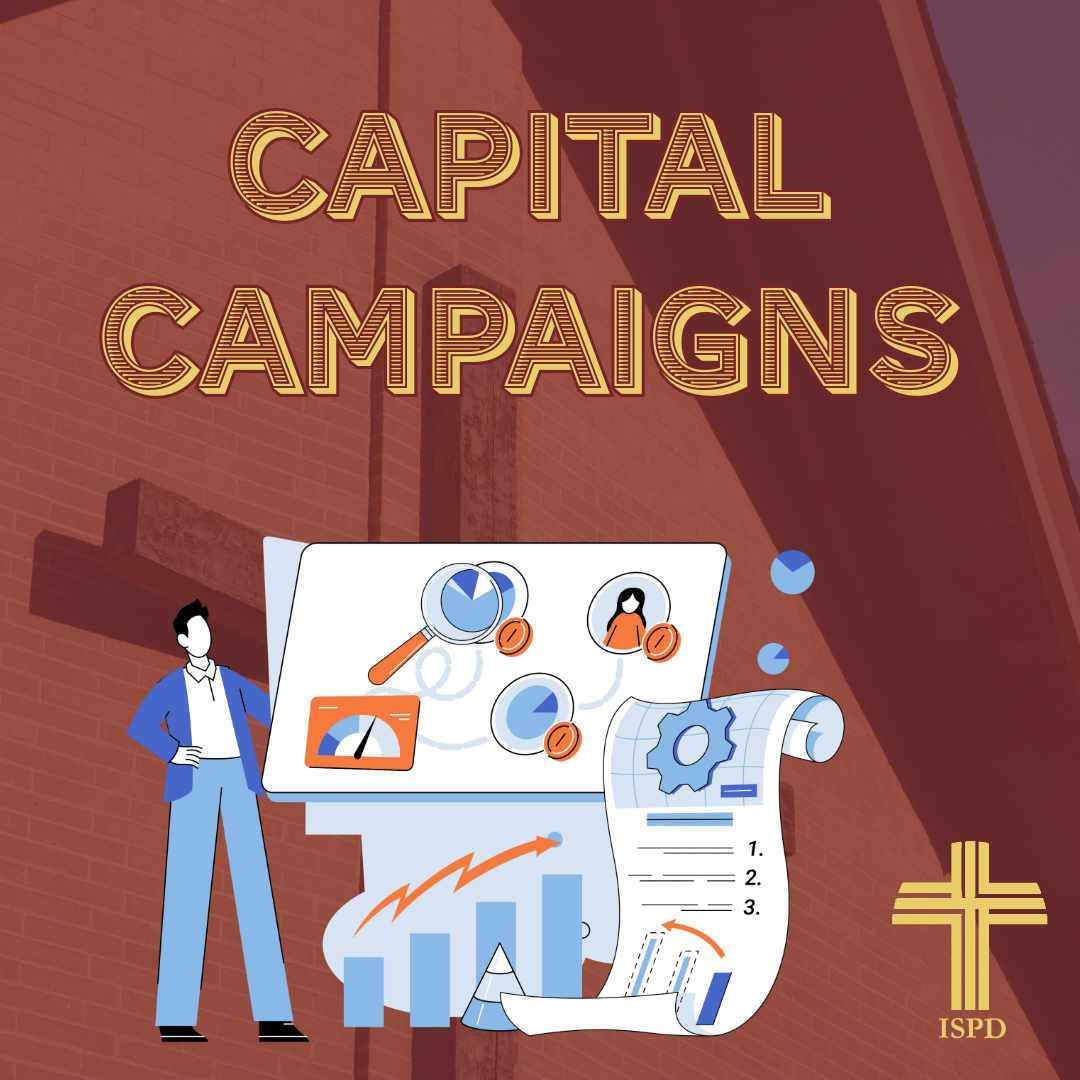- A full functioning database;
- Successful enrollment management processes;
- A comprehensive total stewardship process;
- Active and on-going alum involvement;
- Systemic communications using many platforms and avenues;
- Effective fund/friend-raising events;
- Solid people engagement efforts;
- Successful annual giving;
- Capital campaign preparation and/or initiation;
- Individualized new parishioner welcome process;
- Consistent financial leader identification, relationship-building, and invitation;
- Organized strategic plans of action;
- Plus others.
Like an automobile, without these components (parts) being present, or without them functioning at full capacity, your Catholic school and/or parish may not operate as well as it can, or at worst, may leave you stranded on your journey toward successful Operational Vitality.
Here at ISPD, we have spent the past eight months listening, interacting, surveying, presenting, consulting, teaching, and coaching. Over 2,000 Catholic leaders have participated in, read, or been part of our Monday cohort sessions, our Friday Zoom sessions, our seven national surveys, our SPECIAL EDITION newsletters, our national round tables, our monthly podcasts, our on-line courses for Catholic schools and parishes with the University of Dayton, and OUR SHINING MOMENT video on Catholic schools. From all these activities, which are still continuing, we have observed and learned so much.
Through it all, it is remarkable the progress that many Catholic schools and parishes have made since March 2020. To simplify — if that is even possible — we may be able to put our school and parishes into three categories:
- Pro-active: Surging ahead with creative, innovative, positive, mission-driven leadership on all levels;
- Active: Moving forward but somewhat hesitant, yet able to maintain a certain degree of quality – not all leadership groups being on the same page and/or included;
- Re-active: Somewhat stalled and not moving forward with creativity – waiting on the “powers to be” to tell them what to do and how to do it.
During these times, we find that most Catholic schools and parishes that fall into the first two categories have one thing in common: they seek ways to engage people and build their community. Yet, one of the main questions we have heard over the past few months is this: have we built a solid-enough foundation for our development—advancement—stewardship—enrollment management — communication efforts to sustain themselves over time? Going back to the top paragraph, do we have enough of the main components (parts) in place for this vehicle to go the distance from the end of 2020 and into the summer of 2021? And, how can we continue to add people fuel to our development vehicle?
This newsletter is titled: USING EFFECTIVE PROCESSES AND TOOLS TO BUILD A SOLID DEVELOPMENT FOUNDATION DURING THIS PANDEMIC, PART II. With the November 2020 newsletter, this newsletter and the one in January 2020, we will offer 30 foundational processes that we recommend Catholic schools and parishes consider over the next 6-8 months. We are not saying that all of these should be “taken on” at once; there are those that will best fit your needs and your culture and those that would not be applicable to where you are now. Some are for schools, and some are for parishes, and many are for both. These are the processes that ISPD is now coaching in our new Partnership Coaching Portal. (www.ispdpartnerships.com)
In Part II let’s look at 10 more foundational processes (and tools to use) for effective Catholic Development—Advancement—Stewardship.
Process # 11: Create a Master Plan for All Fund-Raising Events.
- Whom to Involve: Administration (Pastor, president, principal, leadership team), faculty/staff, parish staff, and/or leaders of clubs and coaches of teams who sponsor any fund-raising events
- Tools to Use: ISPD’s Master Plan for Fund-Raising Chart – in 25 Lessons Learned book which is available from NCEA
- Outcomes/Value: Clearly shows if your school and/or parish is “nickel and diming” people or if your fund-raising events are stepping on the toes of philanthropic giving
Process # 12: Search and create your WOW! – what makes your Catholic school and/or parish distinctive from everyone else.
- Whom to Involve: Executive Committee (talked about in Part I November 2020 newsletter – this could be Administration – pastor, president, principal – and development/advancement/stewardship officer, and/or enrollment management/admission officer, and/or board/council chair, and/or chair of Development/Stewardship Core Team, and/or financial leader. This group has the main decision makers and school/parish leaders who are directly involved with the development—advancement—stewardship—enrollment management efforts).
- Tools to Use: The flip chart paper or electronic notes coming out of Process # 10 (November 2020 newsletter) where you developed your Top 10 Selling/Promotional points for your school and/or parish
- Outcomes/Value: Shows how your Catholic school and/or parish is clearly distinctive (not better than) from others. This is the one thing that makes you stand out – in a positive manner.
Process # 13: Seek input using The Ultimate Question Survey – seek input from parents, parishioners, faculty/staff, parish staff, boards and councils, students, and alums.
- Whom to Involve: The Executive Committee should conduct The Ultimate Question Survey with all of the above audiences – can be done on-line, in-pew, at meetings, in classroom.
- Tools to Use: The Ultimate Question Survey (which can be gotten on-line) and Survey Monkey or Google or any other platform, if you are conducting the survey electronically
- Outcomes/Value: Excellent survey that shows who is promoting you and who is not and why – produces your NPS (Net Promoter Score)
Process # 14: Create educational materials in order to educate parents and other school leadership groups on the GAP.
- Whom to Involve: Executive Committee
- Tools to Use: Via PowerPoint, newsletters, and other educational documents, develop a Q & A format that explains the difference between tuition charged and expenses – in other words, what it actually costs to educate a student in your Catholic school.
- Outcomes/Value: Shows what most Catholic schools charge for tuition is well below what it actually costs – further demonstrates the value of the Annual Giving Drive and other Development $$$ efforts.
Process # 15: Explore and research the FISH! Philosophy – establishing a Culture of Belonging.
- Whom to Involve: Executive Committee, Faculty/Staff, and Parish Staff
- Tools to Use: Research the Fish Philosophy from Chart House Learning – contact them or ISPD to further understand and assess the culture of your Catholic school and/or parish.
- Outcomes/Value: Among the best on-line/on-site programs for building a positive culture and an enjoyable work environment
Process # 16: Deliver Your State of the School Message in January.
- Whom to Involve: Executive Committee
- Tools to Use: Zoom, GoToWebinar or any other virtual platform to deliver a 5-7-minute message that will position your Catholic school for the rest of the 2020-21 school year
- Outcomes/Value: Scheduled in coordination with Catholic Schools’ Week, a State of the School message can establish the tone for the rest of the year – especially if highlighted with “good news,” first semester accomplishments, plans for the future, your Top 10 and WOW
Process # 17: Deliver Your State of the Parish Message in January.
- Whom to Involve: Executive Committee
- Tools to Use: Zoom, GoToWebinar or any other virtual platform to deliver a 5-7-minute message that will position your parish for the rest of the 2020-21 school year
- Outcomes/Value: Scheduled in mid to late January, a State of the Parish message can establish the tone for the rest of the fiscal year – especially if highlighted with “good news,” positive plans for the future, your Top 10 Promotional Points (yes, a parish can do this!), and pro-active steps the parish is taking to re-enter full participation on-site as we move more into the 2021 calendar year.
Process # 18: Create Parish/Family Expectations.
- Whom to Involve: Executive Committee
- Tools to Use: Divine Renovation: From Maintenance to Mission by Father James Mallon – a book published by 23rd Publications. In this book, Father Mallon talks about the value of having a clear set of expectations (5-10) that a family can expect from the parish and, conversely, the parish can expect from a family.
- Outcomes/Value: Establishes expectations and can take a parish from being re-active to parishioner involvement to pro-active
Process # 19: Create and Promote Catholic School Outcomes.
- Whom to Involve: Executive Committee
- Tools to Use: Through discussions with the Executive Committee and the faculty/staff, clearly articulate the 10 specific outcomes that a graduate of your Catholic school will leave with upon graduation – can be for any grade level.
- Outcomes/Value: Establishes specific outcomes that can be expected – wonderful enrollment management tool.
Process # 20: Establish Alum Organizational Committee.
- Whom to Involve: Executive Committee
- Tools to Use: Through EC discussion, looking at past alum involvement activities, and past alum giving, put an Alum Organizational Committee in place – can be chaired by two members of the Development Core Team.
- Outcomes/Value: Encourages the school to use the value of alum input in order to build a stronger alum involvement system – one that is set forth by alum leaders and not just the school.















